Saint Paul is said to have visited Athens when the apostles of Christ dispersed to spread the message of Jesus Christ.
The Apostle Paul arrived at the port of Piraeus from Macedonia. Athens had by no means been a random choice – not only did it have a Jewish community, but the city was also known for its religious tolerance. St Paul was greatly distressed to see that the city was full of idols. So he reasoned in the synagogue with both Jews and God-fearing Greeks, as well as in the marketplace day by day with those who happened to be there. A group of Epicurean and Stoic philosophers began to debate with him … Some of the people became followers of Paul and believed.
Their discussions likely took place around the Stoa Poikile, or Painted Colonnade, the ‘seat’ of Stoicism. The Stoic philosophers led him to the Areopagus, the Athenian governing council, where his famous speech was delivered.
The Cultural Route “In the footsteps of St Paul” is based on St Paul’s second missionary journey in the Greek peninsula, connecting religious tradition with historical evidence and archaeological remains, and with references to the presence of Hebrews and the imprint of the Apostles activity in the early Christian communities.
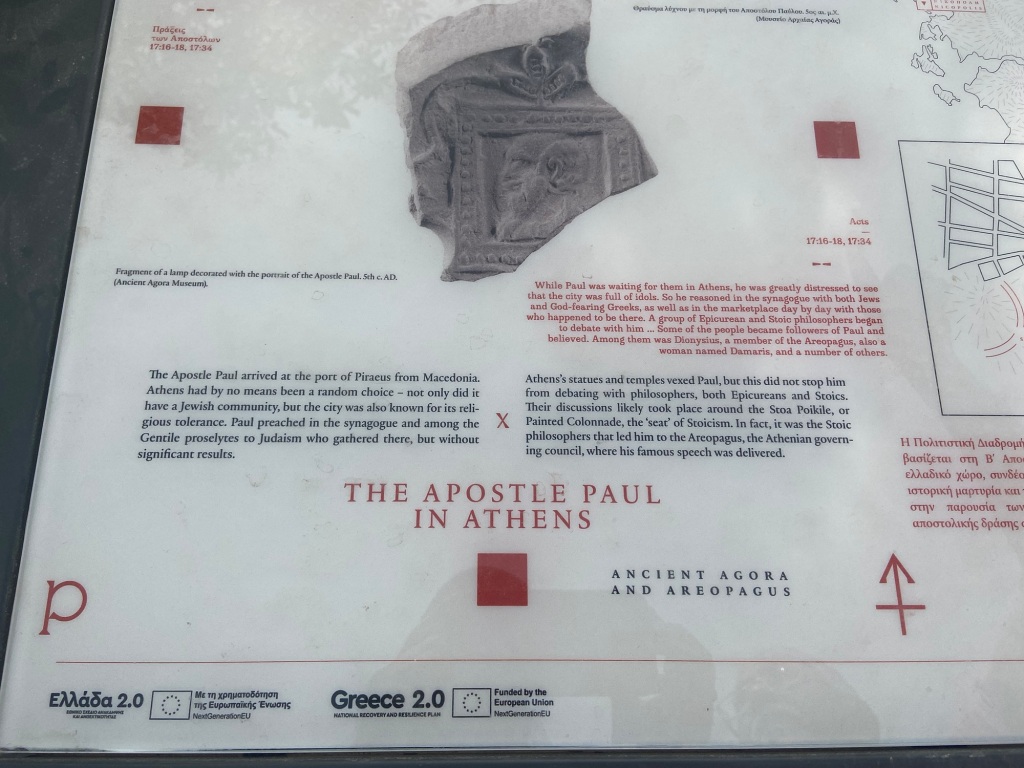

“Byzantium” or “Byzantine Empire” was the name given in the 16th c. to describe the Roman Empire from the 4th century onwards. It was a multinational and, at least at the beginning, a multireligious state. In 1453 it was abolished by the Ottoman Turks. From the 3rd century after the capital was transferred from Rome to Constantinople, in 330, the new capital, characterized as the New Rome, “the Queen of all the cities”, was the city named Byzantium, the ancient colony of the Greek city of Megara at the coast of Bosporos. This city was renovated, adorned and renamed by the Emperor Constantine the Great. Constantinople was to become the main centre of culture for all the Medieval world.
It was in the middle Byzantine period during the 11th and 12th centuries when the most significant churches were built in Athens.
Panagia Kapnikarea, is one of the oldest churches in Athens found in the heart of Ermou Street, built around 1050AD, over the ruins of an ancient temple that honoured the goddess Athena or Dimitra. This Byzantine church is dedicated to the Annunciation of the Virgin. The murals have been painted in two phases a) during the beginning of the 20th century and b) in 195S by the famous modern Greek painter fots Kontog’ou.
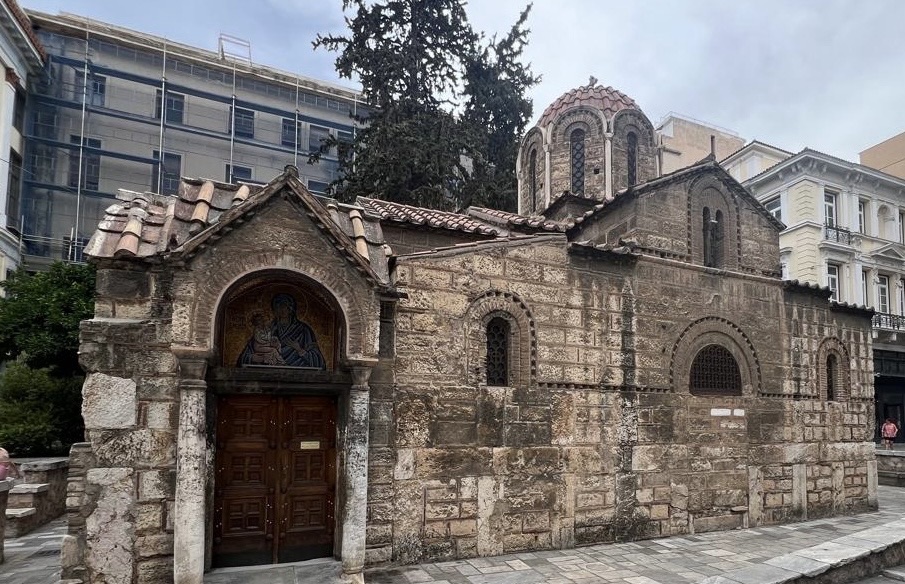
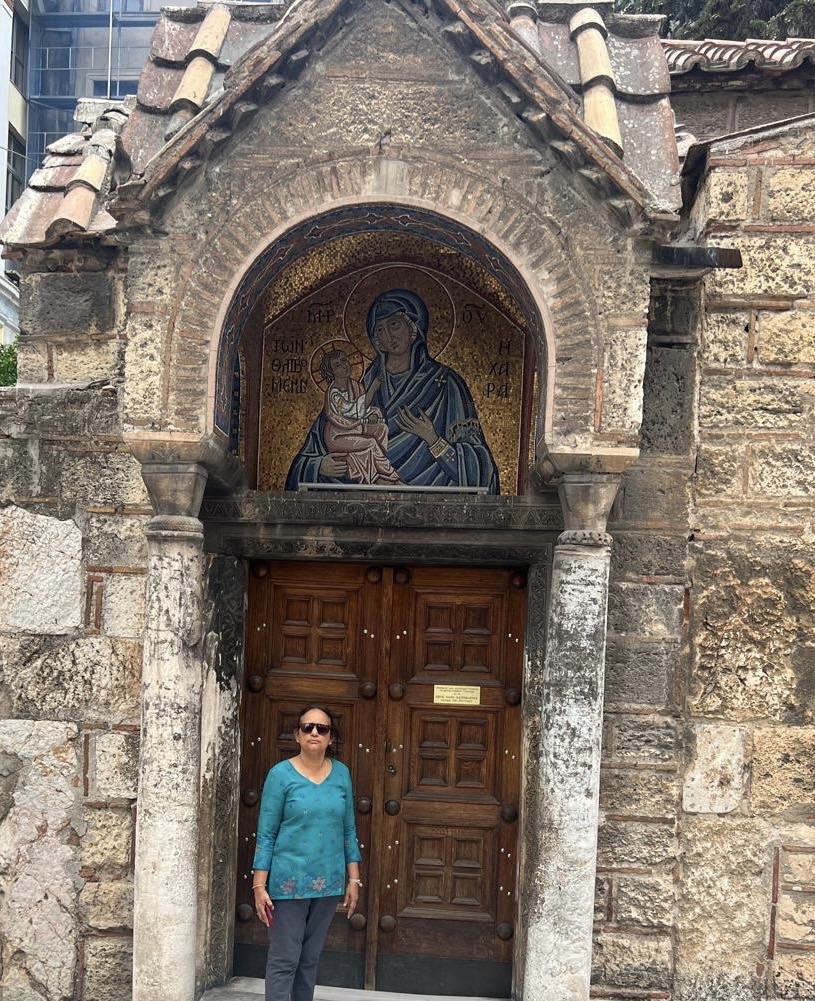
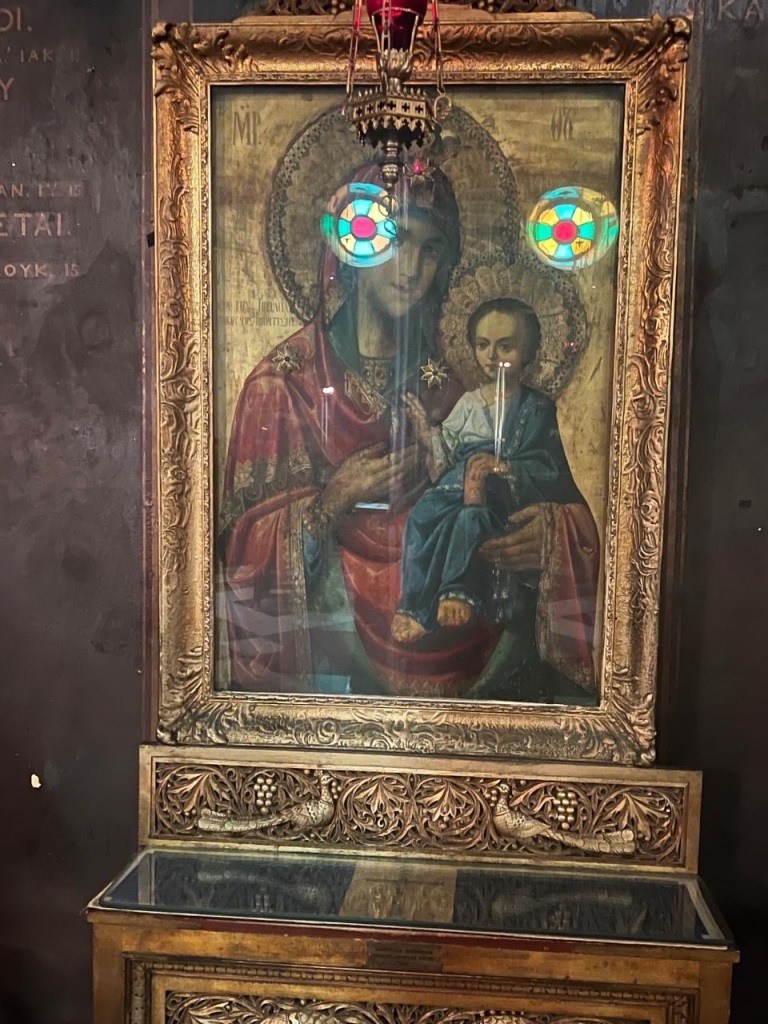

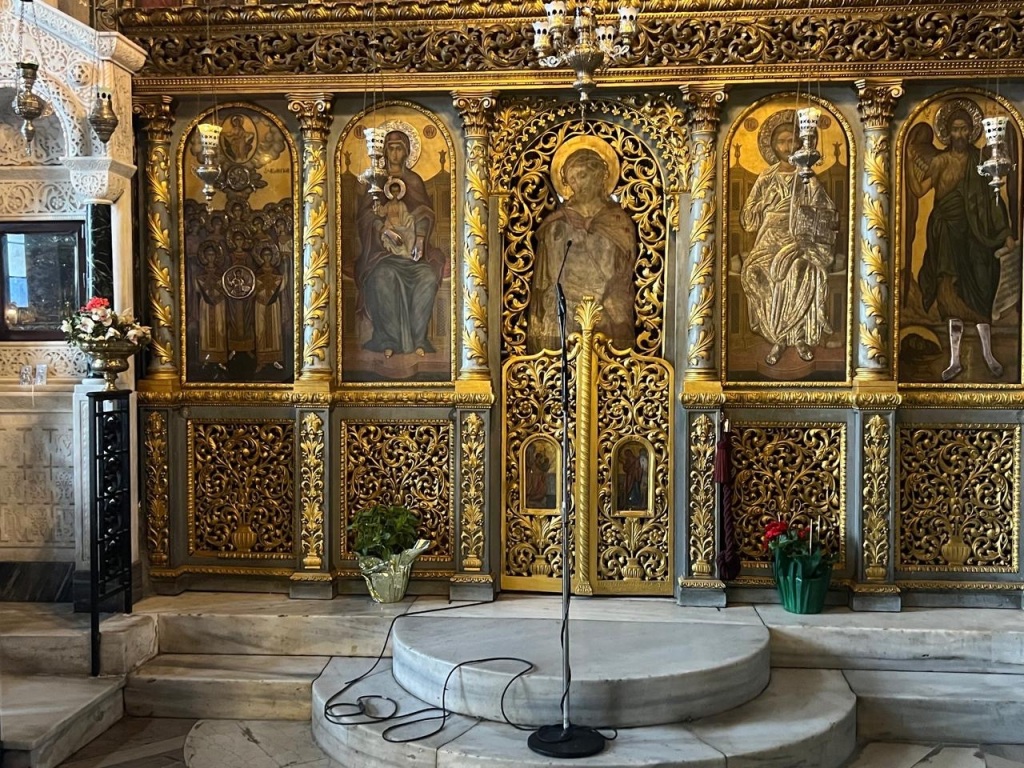
There were many small Byzantine churches around the Ancient Agora site. Due to the uncertain times these churches were small, but insides were heavily oriented. With elaborate brickwork decoration and constructed in an architectural style known as cross-in-square, the churches were distinguished as ‘Athenian’ by their unique red-tiled, eight-sided domes (Athenian Dome) representing the last traces of Byzantium in Athens.



In the Ancient Agora site where St Paul’s footsteps was depicted stood the Church of the Holy Apostles. We could not enter the church as it was closed to public.
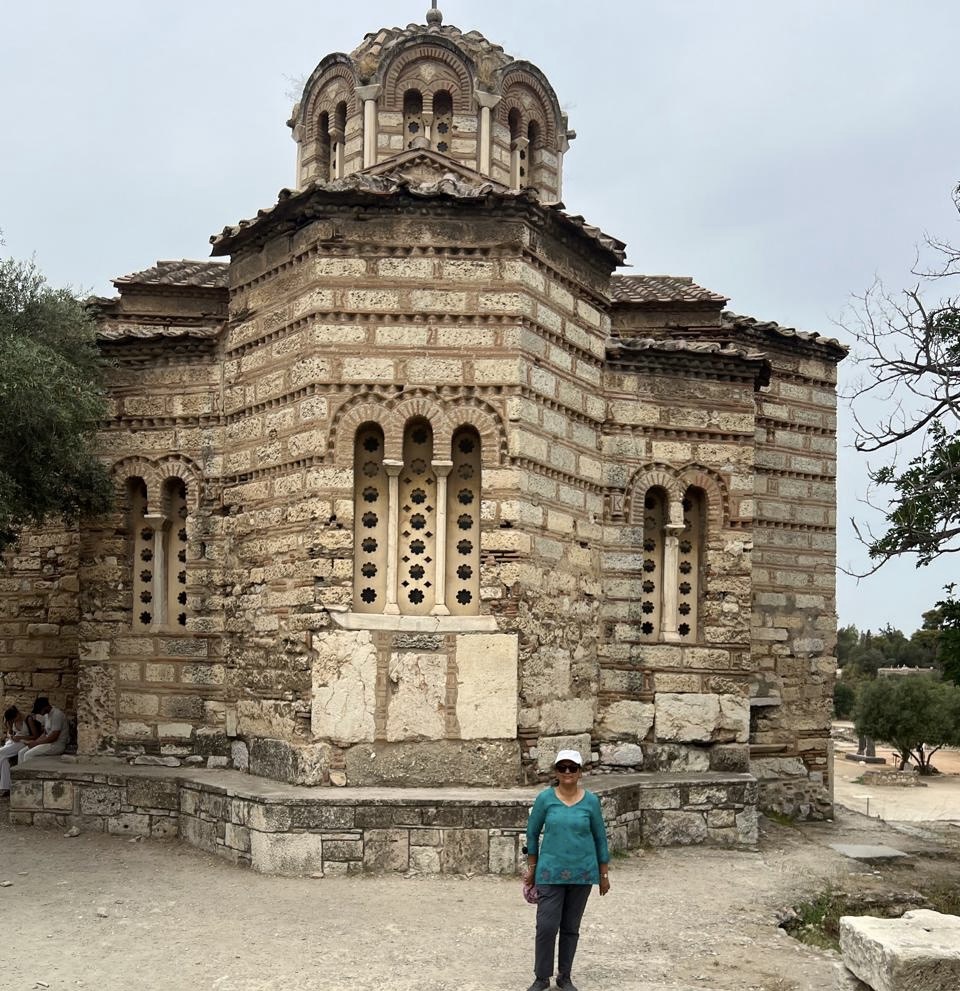

Just outside the Ancient Agora site was a church which held a large number of golden chandeliers, relics and icons from various ancient churches. We were amazed.




To understand more about the Byzantine Churches we visited the Byzantine and Christian Museum. There we saw the most fascinating mosaic icon of Mother Mary and Child Jesus.

Christian art was born in the period 2nd-4th centuries AD, in the bosom of the Roman Empire, and in order to express their belief Christian artists and patrons chose to employ the figurative language of the age. Christians borrowed familiar forms from the Greeco-Roman world, and imbued them with new content. The figure of the shepherd carrying a lamb on his shoulders, look derived from the Greek statues of the calf-bearer (moschophoros) or kid-bearer (kriophoros), was used to portray the idea of Christ as the Good Shepherd who, in accordance with scripture, “giveth his life for the sheep” (John 10:11). Another suitable figure was Orpheus, the mythical lyre-player from Thrace who worked his musical spell over wild animals that were shown gathered round him in late antique art. Christians considered that Orpheus could be understood allegorically as Christ, who with his words tames the hearts of men. (As in the Byzantine and Christian Museum)
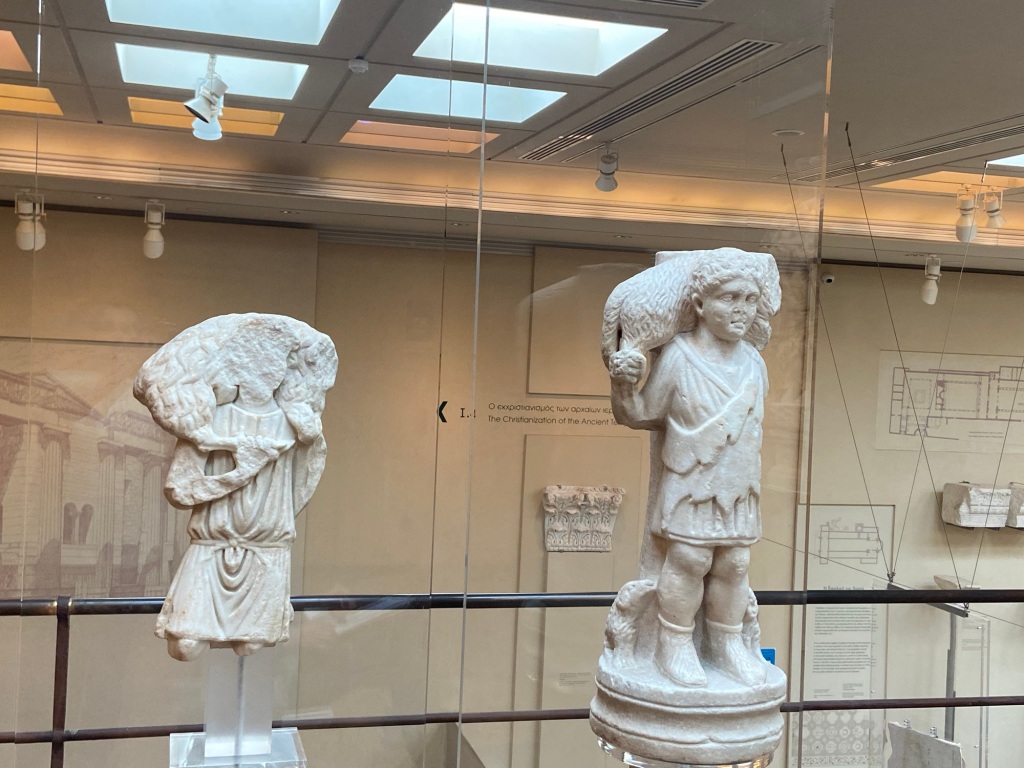
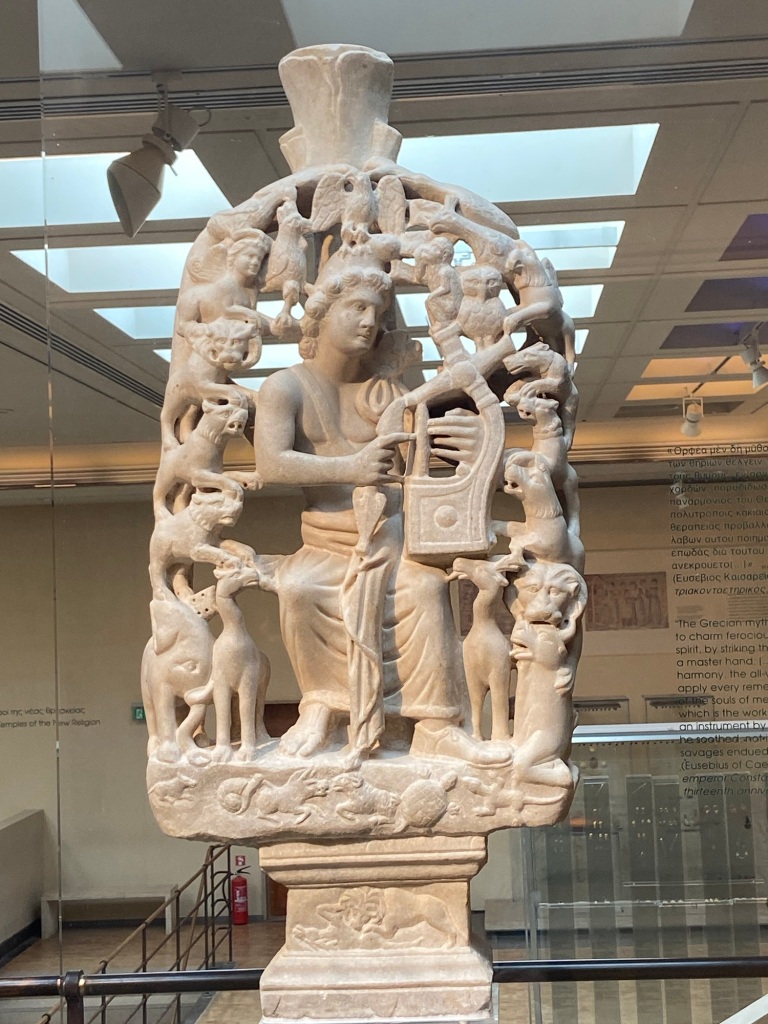
The most moving relics were the icons of Virgin Mary with Child Jesus, titled the Virgin of Tenderness.
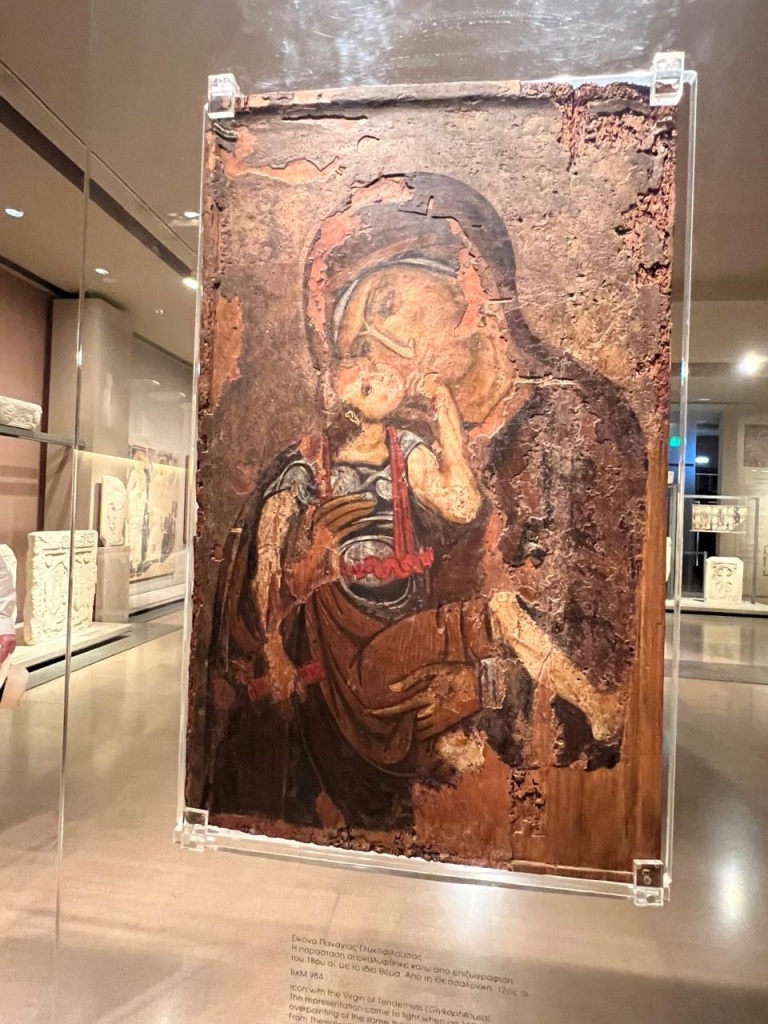




One thought on “Christianity and Byzantine Churches, Athens”